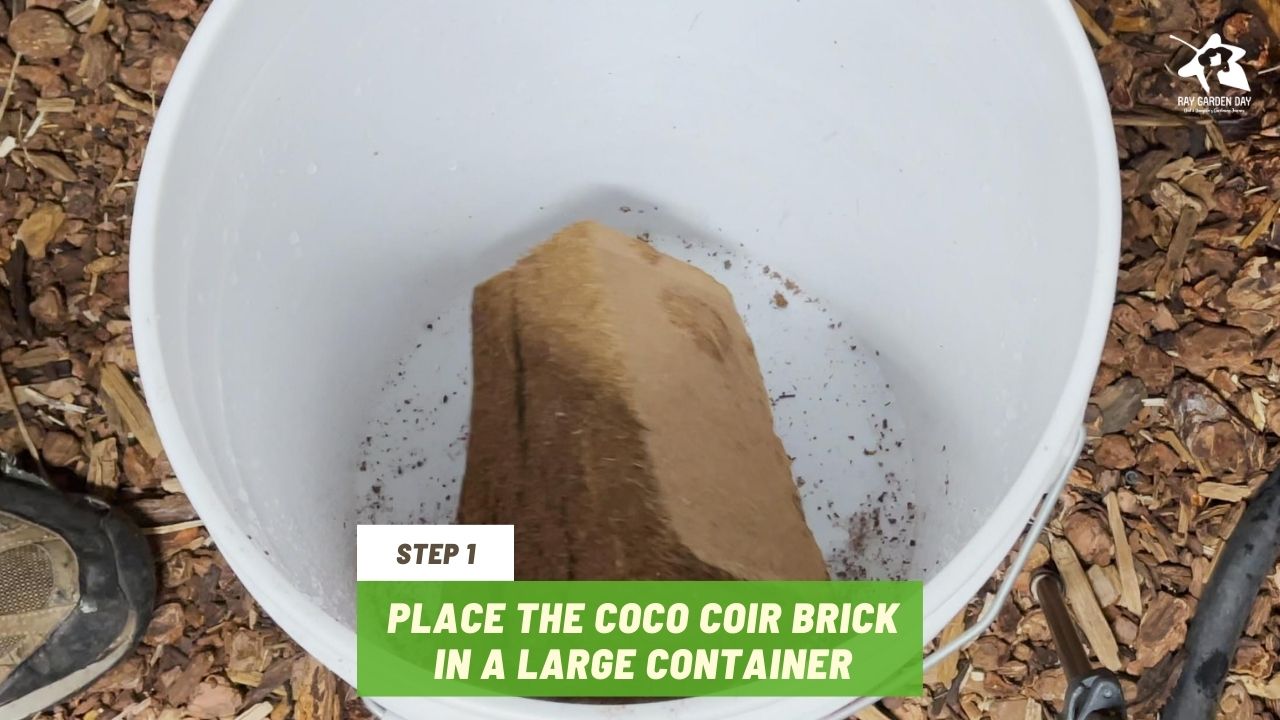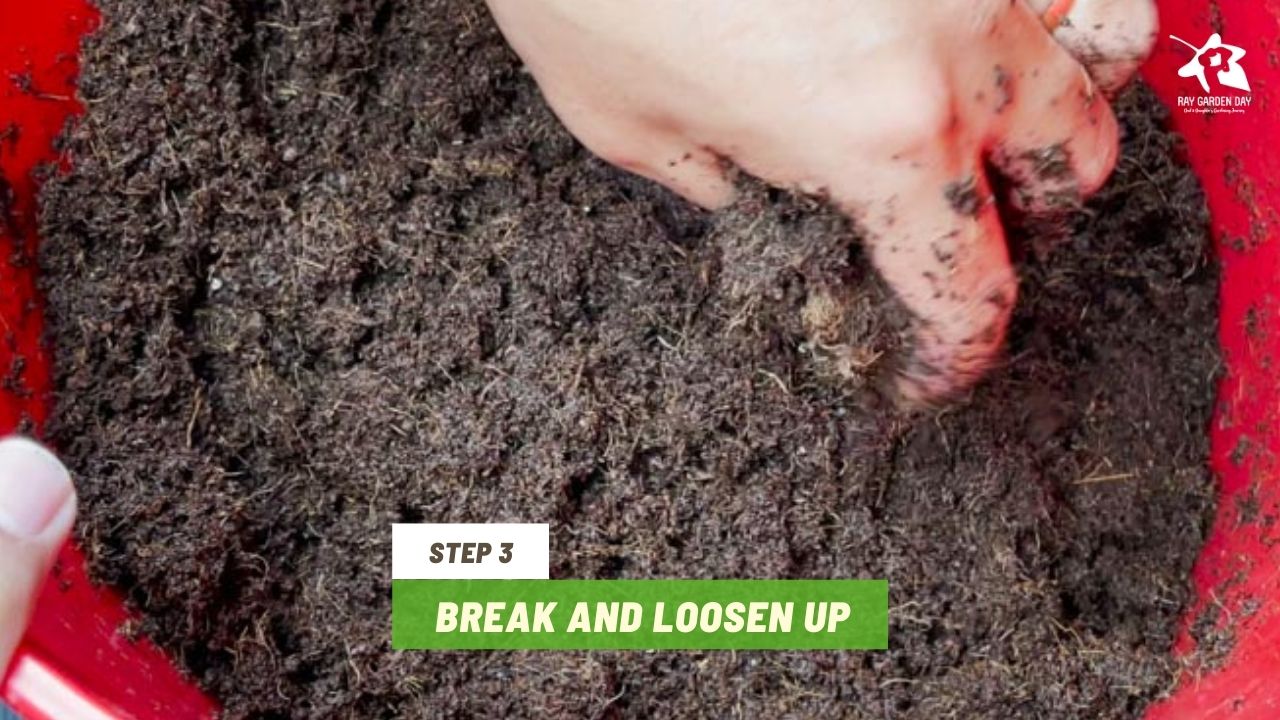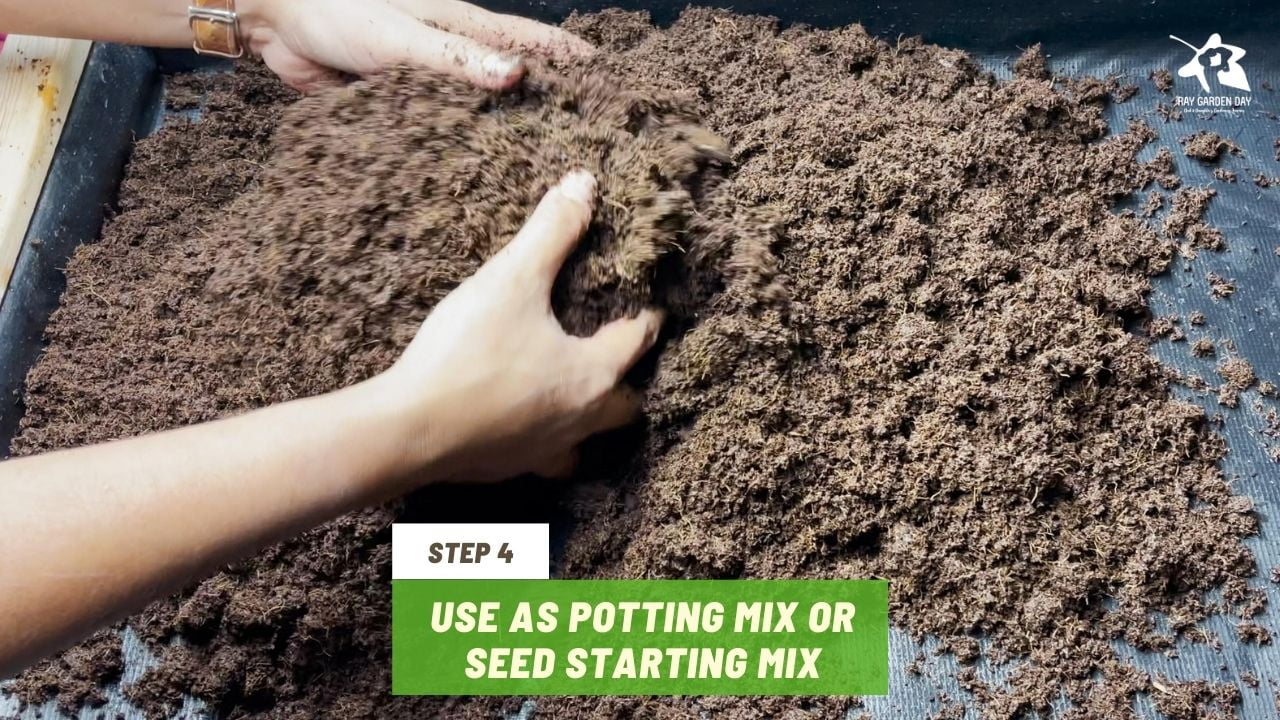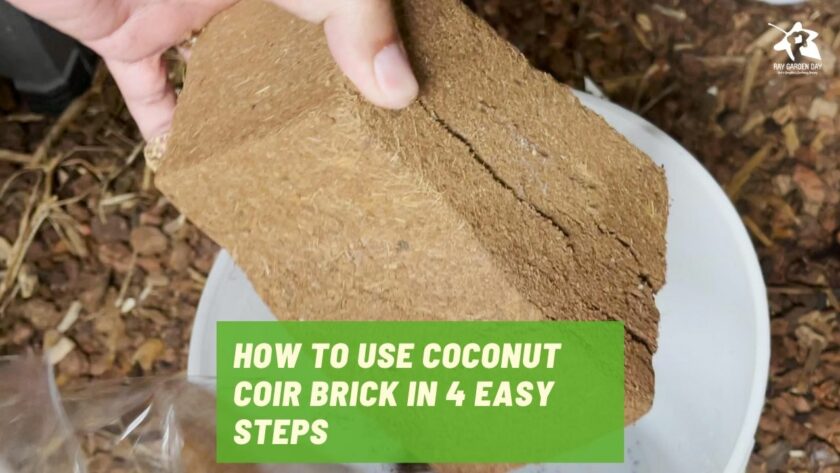Coconut coir has many uses in the garden. You can use it as a soil amendment, growing medium, or a natural seed starting mix.
A small bag of loose coco coir can be pretty expensive. Thus it is more cost-effective to buy a coconut coir brick and prepare it yourself simply by adding water.
I never needed more than five bricks per season for seeds starting for my small backyard garden. You can find coco bricks sold in most garden centers or buy coco coir bricks from Amazon.
Materials you’ll need:
- 1 coco coir brick
- A large container (5-gallon bucket)
- 4 qt. of water
Before use, a coco coir brick must be first hydrated. I will show you how to rehydrate a coir brick and prepare a coconut coir brick in 4 easy steps.
Total Time: 30 minutes
Place the coco coir brick in a large container
Remove the brick from its wrapper and place it in a large container. In this guide, I’m using a 5-gallon bucket.
Add water to rehydrate the coco coir brick
Add 4 quarts of water. The compressed brick will begin to expand immediately. Let it sit in water for 10 minutes to absorb all the moisture and break down.
Break and loosen up coconut coir brick
Use your hands to break up remaining coco coir clumps to allow moisture to penetrate. Add more water as necessary. You want the coco coir to be damp but not too wet.
Use and store excess coco coir
Use as needed. If you’re using coco coir as a potting medium, then add any combination of vermiculite, compost, and worm castings. Store any excess coco coir in a sealed container.
As a seed starting mix, no other ingredients are needed. So go ahead and fill seed starting pots or cells with rehydrated coco coir.
How to use coconut coir brick FAQ
What is a coconut coir brick?
The coconut coir bricks are made from grounded and then compressed coconut coir. The coir is the fiber from the outer husk of mature coconuts. It’s processed then compressed to a block of 4 inches wide by 8 inches long and 2 inches thick for ease of transport and storage.
Is coco coir suitable for seedlings?
The majority of coco coir available today is safe and organic. In addition, it’s sterile, thus making it a popular choice by home gardeners and commercial growers for starting seeds.
Can I use coco coir with soil?
Hydrated coco coir makes excellent soil amendment by adding organic matter and aerating the soil. You’ll also find coco coir hard to beat when it comes to water retention. As a soil amendment, it acts as a sponge to hold water in the root zone so that the plants can use it when they need it.
Do I need to add nutrients to coco coir?
Yes, you do. Coco coir, especially the brick form, does not contain any nutrients. Thus, you’ll need to add compost or worm castings to provide it with nutrients. Another option is to use nutrient-enriched water to give the coco coir more nutrients through fertigation.




